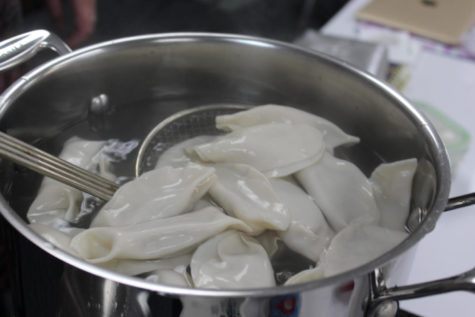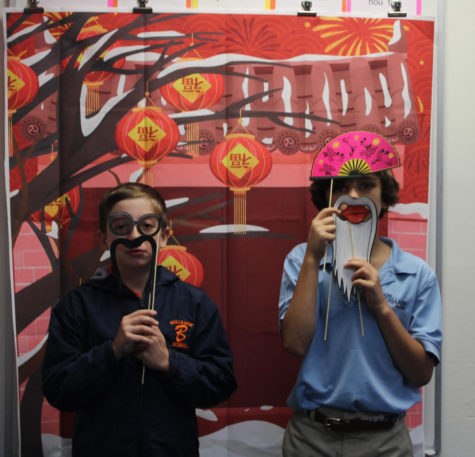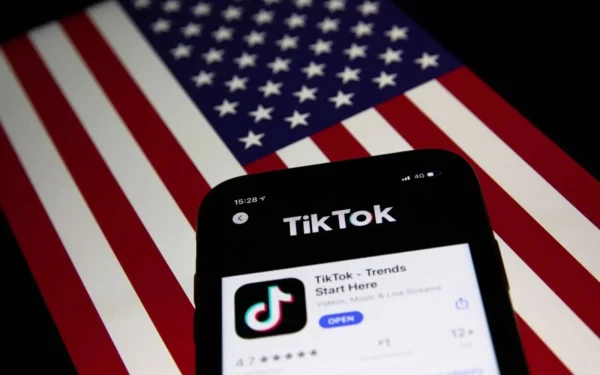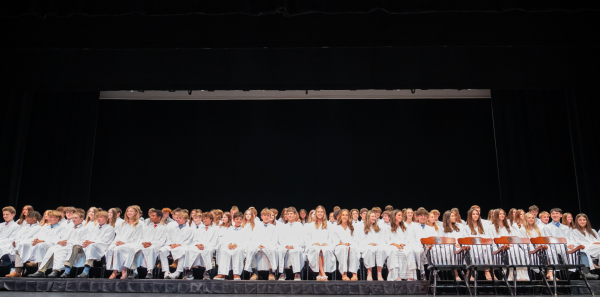Get Your Red Ready – It’s the Chinese New Year
Ms. Latimer helps her students make traditional Chinese dumplings during class on Wednesday, February 13.
Every winter, Chinese families come together to celebrate the Chinese New Year. Children in China have time off from school and adults are given the day off from work so they may celebrate. The date of the New Year is not always the same because it is the first day of the lunar calendar, but it always falls in late January or early February. People all over China enjoy this holiday in many ways, and here at Benjamin, the middle school Chinese classes celebrate as well.
“We will watch some videos, specifically advertising videos that focus on the New Year, and [we’ll] also make Chinese dumplings,” said middle school Chinese teacher Ms. Kimberly Latimer.
It is important that the Middle School takes an interest in the Chinese New Year because it helps students understand the Chinese culture. Plus, they love to celebrate by eating.

Ms. Latimer boils the dumplings for her and the students to enjoy.
“My favorite part last year was just eating the dumplings,” said seventh-grader Shane Giamo. “I am looking forward to learning about traditions [this year] as well,” he said.
The Lower School will have each grade sing a Chinese song in line up. The traditions in China, however, run far deeper. Many of those traditions focus on scaring away the sea monster named Nian. In doing so, the customs range from wearing red clothes to lighting off fireworks. The Chinese also decorate their houses in red to ward off Nian. Banging pots and pans is another way of scaring away the sea monster.
Chinese families traditionally clean their houses to represent a clean start to the new year as well. Red envelopes with money are also given to children to suppress evil.
“I usually get $150 in my red envelopes,” said seventh-grader Chloe Fong, whose family is Chinese.

Sixth graders RJ Sahm and Scott Noble pose with some props in front of a Chinese backdrop during their B-period class.
In addition, everyone in China tries to get home for the holidays. “They go home …and have a large feast and watch the spring gala festival,” said lower school Chinese teacher Lucy Wei, a native of China. The spring gala festival is televised on the eve of the Chinese New Year and is the world’s most watched television program. It usually features a variety of dance, drama, and comedy performances.
Many other countries that either has large Chinese populations or lunar new year celebrations of their own also celebrate this holiday, such as Singapore, Vietnam, and the United States. However, their New Year’s celebrations usually only last a day, not fifteen as is the case with China. In Singapore and Vietnam, there are dance competitions, street bazaars, and countdowns. In America, those who celebrate the Chinese New Year hold ceremonies and parades in large cities that include lion and dragon dances.
This year is the Year of the Pig in the Chinese Zodiac known as Sheng Xiao, is based on a twelve-year cycle that originated during the Han Dynasty (202 B.C. – 220 A.D.)The Zodiac uses twelve different animals, one for each year in the cycle, to represent each year. The animals are the rat, ox, tiger, rabbit, dragon, snake, horse, sheep, monkey, rooster, dog, and pig. Depending upon what year a person is born, they are thought to possess the traits of the particular animal that represents that year. For example, people born in the Year of the Dog are thought to be loyal while people born in the Year of the Dragon the dragon are believed to be brave and fierce. “This year’s Benjamin sixth graders were born in the year of the golden pig, so they should be especially healthy and wealthy,” according to Latimer.
The Chinese New Year is the most celebrated and important holiday in China. Each animal year represents Chinese culture as a whole. The foods, colors, and stories all are part of the Chinese national persona. Here at Benjamin, with the Chinese language a part of the world language curriculum, it’s important for students to learn about China and its culture by celebrating this momentous holiday.





